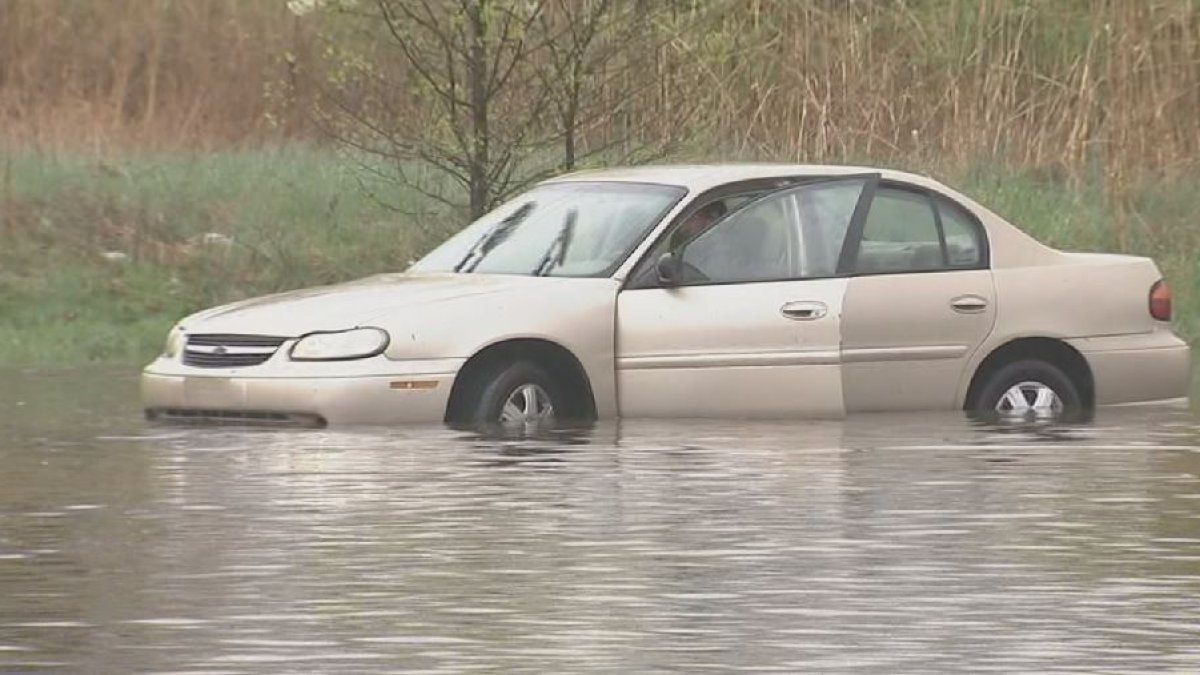How to prepare for Hurricane Hilary
Here are tips on hurricane preparation, according to the National Fire Protection Association.
Have your devices fully charged ahead of time, especially if you rely on electricity for medical equipment
Make your evacuation plan: Including pets, transport routes and destinations
Keep your gas tank at least 3/4 full at all times
Fill the bathtub or buckets with water to use for cleaning and flushing toilets
Turn off propane tanks
Turn off utilities if instructed to do so
How to build an emergency supplies kit
Gather these items and put them in a waterproof, portable container in an easily accessible location:
Water (1 gallon per person recommended)
Non-perishable food (if canned, bring a can opener)
Battery-operated radio and flashlights
Copies of important documents
First aid kit
Tissues, toilet paper with ties for personal sanitation
Portable power banks for phones
Sleeping bag/warm blanket
For a full list of supplies, click here
Flash flooding safety tips
From Saturday morning to Monday afternoon, a Flood Watch will be in effect for all of San Diego County. That means sudden flooding may happen. If you must drive, use extra caution and drive slower than you normally would.
Flash floods are no joke. If you are driving and come across a flooded roadway, remember: Turn around, don’t drown.
Do NOT drive your vehicle through the flood roadway, even if the water doesn't look that deep to you
Slow down. It takes longer to stop when driving on wet roads. Give yourself an extra 15 minutes or so to get where you're going
Turn on your headlights
Try to drive toward the middle lanes as water tends to gather in outside lanes
Defog your windows
Keep extra distance between yourself and other cars. Spray from other vehicles can hamper your vision and it takes longer to slow down on slick roads
Don't oversteer or stomp on the brakes. If you start hydroplaning or skidding when your tires lose traction, take your foot off the accelerator so your vehicle can slow down, slowly
It takes only 1 foot of flowing water to carry away a small car and only 18 to 24 inches for larger vehicles, according to the National Weather Service. More than half of flooding deaths that happen each year happen inside vehicles, the NWS says.
“Flash flooding has killed the most people in the United States in the last 10 years from tropical storms and hurricanes,” NHC Director Michael Brennan said during a Tropical Update on Friday morning.
If you live in areas that are prone to flooding, such as Mission Valley, add sandbags to protect those low-lying areas, the County of San Diego advises. County and Cal Fire officials are offering free sandbags for anyone in need.
Even in seemingly unlikely areas like mountains and deserts, flash flooding is possible.
As such, roads may close due to flooding, downed power lines, trees and more. You can monitor road closures here.
On top of the flood warning, a tropical storm warning has also been issued for San Diego County. High wind safety
High wind speeds moved Hurricane Hilary into a Category 4 storm, which is a major hurricane level. Sustained winds of 39 to 73 mph are possible within 48 hours, according to the San Diego County Emergency Site.
Here’s how to stay safe during high wind weather events:
Secure loose outdoor items that could blow away like umbrellas, patio furniture and garbage bins to prevent them from blowing away, causing damage, especially to power lines
Watch for flying debris, especially from nearby balconies or other high places
Stand away from roads, train tracks and seek shelter. Winds may blow you into oncoming traffic, NWS says
Winds may knock over trees and/or power lines. Fallen electric lines are extremely dangerous and can injure you or even cause death, SDG&E says. What to do about downed power lines
If you encounter a downed power line, do NOT touch it. Always assume it is energized, stay away and call 911, SDG&E says
If you encounter someone who has come into contact with a power line, do NOT touch them. Call 911 and SDG&E at 800-411-7343 to report it
It an overheard wire falls on top of your vehicle while driving, avoid stopping. Instead, continue driving away from the line. If you get stuck, remain calm and stay inside your vehicle, call for help and stay inside until emergency help arrives, SDG&E says
If you must exit the vehicle for safety reasons, open the door or window and jump out without touching the vehicle and the ground at the same time. Be sure to not fall back against the vehicle and avoid touching any wires on the ground, SDG&E says
If your power goes out, head to sdge.com/outages for status updates and to see the full service map. Avoid depleting your phone of battery during an outage. Save it for emergencies


